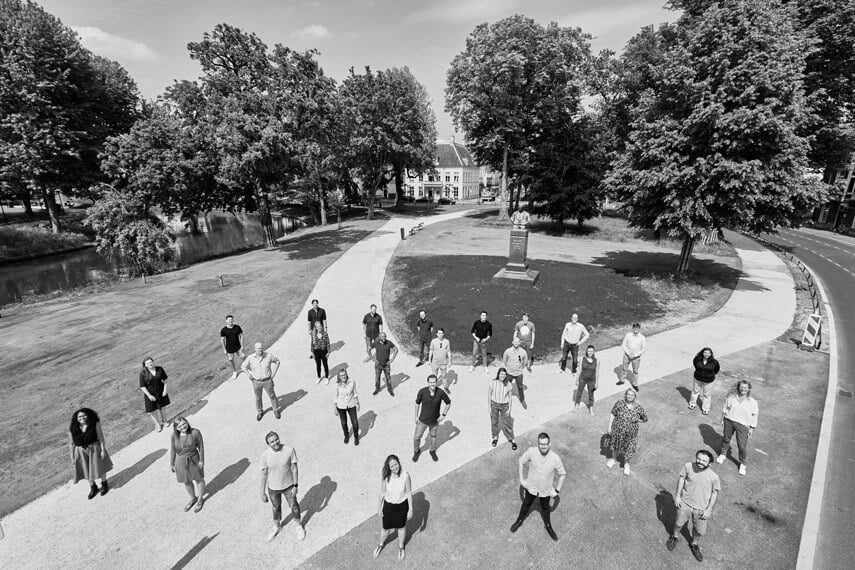UX design is a highly creative profession with proven UX design processes. As a UX team manager, you’re managing a set of talented people each with a unique set of specializations and expertise. You’ve assigned them to various projects so that their skills and expertise are being evoked and you expect that they would be happy at their work. Much to your surprise, you realize that your team of talented designers isn’t happy but is running on low morale. Designers feel disconnected from the team and demotivated at work, with the devastating result that the quality of their work suffers.
As a good UX manager, you would want to take steps to make them happy at work and boost their morale. Here’s an analysis of what most commonly affects UX design teams and tips for you to improve happiness and work satisfaction in your team.
A paradigm shift
What’s needed in most organizations is a paradigm shift in how the role of UX designers is viewed. Often UX design is considered as a commodity service provided by individual designers. They fail to see that UX design is the output of a set of methodical processes just as, for example, product development. Designers need to work closely together with other designers, follow the UX design processes, ideate and innovate together, and review each other’s works to be able to produce high-quality outputs. When designers are expected to circumnavigate all their processes and simply produce the screens specified by other stakeholders, their work is de-professionalized and they naturally feel discontented. This is not a desirable situation for any organization.
The corrective course for such a situation is to recognize designers as part of a design community, support them in their processes, and provide opportunities for them to collaborate with each other even though they might be working on unrelated projects. Once you set out on this path, the 5 tips listed here will come in handy for you to take immediate actions.
Tip 1: Foster collaborative culture
Bring your designers together on a regular basis as part of their jobs to collaborate and work as a team. In addition to scheduling regular peer reviews, provide them opportunities to share their knowledge and ideas. Ensure that your designers working on different projects aren’t wasting their efforts in double work when have the same or similar tasks. When a designer is stuck in his work, make sure that he has another designer to turn to. Arrange team building activities periodically. When designers feel like they’re a part of a design community, you’ve accomplished your goal.
Tip 2: Recognize and reward
Provide designers regular opportunities to highlight their accomplishments and to present their ideas. Recognize and reward exceptional contributions. Reward learning and knowledge sharing. Encourage team members to discuss their work in the team. Consider team presentations as a factor in employee growth. Create opportunities for them to be a part of the larger UX design community.
Tip 3: Empower with structured processes
When designers are supported by a clear structure in the team and processes to be followed in their work, they can practice their work professionally. For example:- when it’s established in the organization to involve UX team members in user research phases of product development, they’ll feel like equal partners in the process and not just like service providers.
- when you have processes to track the progress of work, the team members feel accountable to their commitments and thus develop a professional attitude towards their design activities.
- Return creativity to their work. When a project is defined as a production of screens for an application, a designer thinks they are doing non-creative puzzle fitting. But with design process in place, each project becomes a design challenge.
Tip 4: Provide professional development opportunities
As a UX manager, it’s important for you to make sure that your designers do not stagnate at their work. Keep alive a continuous learning culture. Provide opportunities in the team to attend well renowned conferences, follow courses, and acquire certifications. This boosts the professional confidence of the designers and their commitment to the team.
Tip 5: Pay attention to work-life balance
This is a universal tip for any team or organization but particularly sensitive issue for those in talented professions. Physical and mental wellbeing of team members is essential for producing quality work, especially in a highly specialized and creative field like UX design. Encourage your team members to talk about their situation without the fear of being penalized or judged. See if they’re constantly rushed about to meet their deadlines. Find out the underlying reasons why that might be happening. In essence, listen to your employees, be on the alert to notice any red flags, and take timely action.
You might also consider investing in a tool that helps you structure your team, establish design processes, and develop a collaborative culture. Keen Design offers Design Studio for exactly this purpose. Get to know more about the program.






